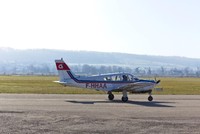Are small airplanes safe? Facts to keep in mind

For the longest time, air transportation has maintained the title as one of the safest transport modes available. While this is somewhat true, there’s always a concern on whether small airplanes are as safe as the larger ones.
According to the Federal Aviation Administration (FAA), roughly three small plane accidents are reported in the United States daily. But does that mean small aircraft are less safe than larger airplanes? Read on for insightful facts.
Five Facts You Probably Didn’t Know About Small Airplanes.
1. Smaller Planes Feature Less Complex Safety Systems Compared to Larger Ones
The safety features in larger planes are the reason behind the lesser crash rates compared to small planes. The more complex an airplane is, the more the features in its safety systems. These may include speed sensors, de-icing systems, angle of attack sensors, among others.
These safety features act as pilot guides. They provide them with accurate information on plane control. Large planes rarely lack such complex safety systems, which you cannot easily find in private jets. If you have been injured or a loved one has been killed in an aviation accident, contact an airplane attorney as you may be eligible for damages if someone else was responsible for causing the plane crash.
2. Small Airplanes Are More Prone to Turbulence Effects
All airplanes, regardless of size, are designed to withstand more than their standard operating capabilities. Therefore, in most cases, the disturbances caused by turbulence are unlikely to cause damage to any airplane.
Nonetheless, small airplanes are lighter than large aircraft. Their engines are also weaker, making them more susceptible to strong winds and other extreme weather effects.
3. Small Airplanes Are Not Subject to Stringent Regulations in The Airline Industry
Airlines are incredibly strict. Public safety is put on the front line, ensuring the elimination of as much risk as possible. On the contrary, general aviation airplanes are not subject to stringent regulations in the airline industry, which contributes to the increased fatality rate.
For instance, small planes can land almost anywhere, including airports with unpaved runways. Additionally, due to the lack of strict restrictions and lower fuel tank capacities, the planes are likely to run out of fuel mid-flight, thus high chances of crashing.
4. Small Plane Pilots Are Less Experienced
Pilot inexperience is among the leading reasons why small airplanes are prone to fatalities. Amateur pilots face lesser restrictions compared to commercial pilots. They require lesser flight hours to qualify for a license.
For example, a pilot will log just 35-40 flight hours and qualify for a private pilot license. Recreational and sports pilot licensing may demand even lesser flight hours.
However, it can take commercial pilots up to 190-250 flight hours to qualify for a license. An airline pilot must reach 1,500 flight hours before being logged. These licensure requirements show how small aircraft pilots are prone to errors, making the planes riskier.
5. Small Planes Are Susceptible to Wildlife Strikes
Small airplanes operate at lower altitudes than large airplanes. There have been instances where small airplanes have run into birds. If such an accident strikes the plane engines, it may result in major plane failures, causing an accident.
Take Away
Small airplanes are undoubtedly more susceptible to crashes than commercial planes. Their design, less complex safety systems, pilot inexperience, and lack of strict flight restrictions are some of the causes for increased accident rates for small aircraft.
If you sustain injuries or damages due to a small plane crash caused by someone else’s negligence, be sure to seek help from an attorney. The right lawyer can help you get the compensation that you deserve.

